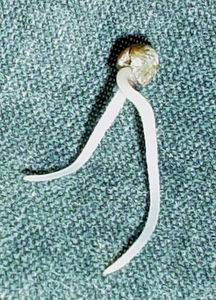G
Guest
GMT - So, did you deliberately mis-spell "spelled" in the 'reason for editing' when you corrected "bonzo"? Sorry - I was a secretary for way too many years and spent several years editing a newsletter. Can't help myself!
Two boys, eh? I guess several of us crossing our fingers for you might have helped a little more than we thought!
I generally see people mention back-crossing or sibling-crossing for about 4 generations to achieve reasonable stability. I'm not sure what percentage I'd look for in a trait such as polyploidism since that's pretty rare; maybe 50-75%? Even the stable strains aren't perfectly uniform; you'll still find various pheno differences in plant height, stretch, etc.
A suggestion - instead of fertilizing the entire plant, fertilize a couple of branches selectively (maybe a couple of branches with each male if you do have two). That way you could harvest the majority of the plant as usual and leave the fertilized branches to finish. You might fertilize lower branches (maybe not bottom, but not top) so that the flowers had enough light to ripen but not to interfere with regular harvest. I know of breeders who regularly fertilize different branches of the same female with pollen from different males either to gain several crosses or to compare the strengths of various males. You don't end up with as many seeds of each type, but for a small garden, this is a way to experiment with more genetics in a smaller space.
Two boys, eh? I guess several of us crossing our fingers for you might have helped a little more than we thought!
I generally see people mention back-crossing or sibling-crossing for about 4 generations to achieve reasonable stability. I'm not sure what percentage I'd look for in a trait such as polyploidism since that's pretty rare; maybe 50-75%? Even the stable strains aren't perfectly uniform; you'll still find various pheno differences in plant height, stretch, etc.
A suggestion - instead of fertilizing the entire plant, fertilize a couple of branches selectively (maybe a couple of branches with each male if you do have two). That way you could harvest the majority of the plant as usual and leave the fertilized branches to finish. You might fertilize lower branches (maybe not bottom, but not top) so that the flowers had enough light to ripen but not to interfere with regular harvest. I know of breeders who regularly fertilize different branches of the same female with pollen from different males either to gain several crosses or to compare the strengths of various males. You don't end up with as many seeds of each type, but for a small garden, this is a way to experiment with more genetics in a smaller space.







 .
.












